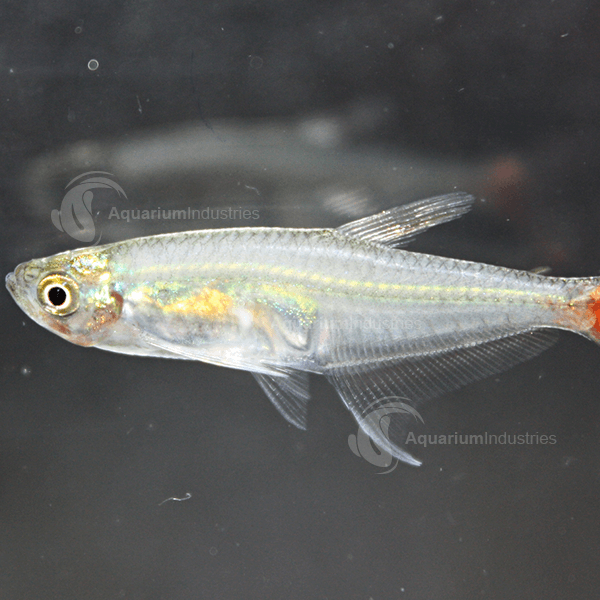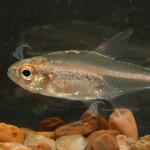Description
The Glass Bloodfin Tetra has a translucent body, so much so you can see the lines of its skeleton. They also have a bright red tail and a splash of blue down the sides of their body.
Tetras are best kept in large schools (minimum 6 in the group) and different species can generally be kept together with few problems. Tetras will also mix readily with a range of species and are generally an ideal community fish – however as many species are relatively small, it is not a good idea to mix them with species that grow large such as Oscars. Some species can be prone to eating aquatic plants
Many species show no sexual dimorphism at all making sexing of the fish difficult. As is common with most species, females carrying eggs can often be seen as fish with a distended abdominal area. However, in some species traits such as longer fins, more elaborate colours or patterns and size differences can be used to tell male from female. Tank breeding of Tetras is often problematic due to their particular needs for water quality; however, many advanced hobbyists are able to breed most of the common species. Most commercial Tetra species are now farmed throughout Asia and even in indoor facilities in Europe, USA and Australia.
Tetras are the most common type of fish found in South America after catfish. Their name is commonly used for a large group of fish characterised by the presence of a small adipose fin between their dorsal and caudal fin. The term Tetra is actually not a taxonomic grouping, as many unrelated fishes from differing families have been commonly called Tetras. Tetras are the second most commonly kept fish in community tank setups, after livebearers (see our Livebearer Care Sheet for more information on these fish) . They are popular because of their vibrant colours, manageable size, mild behaviour and schooling habits.







